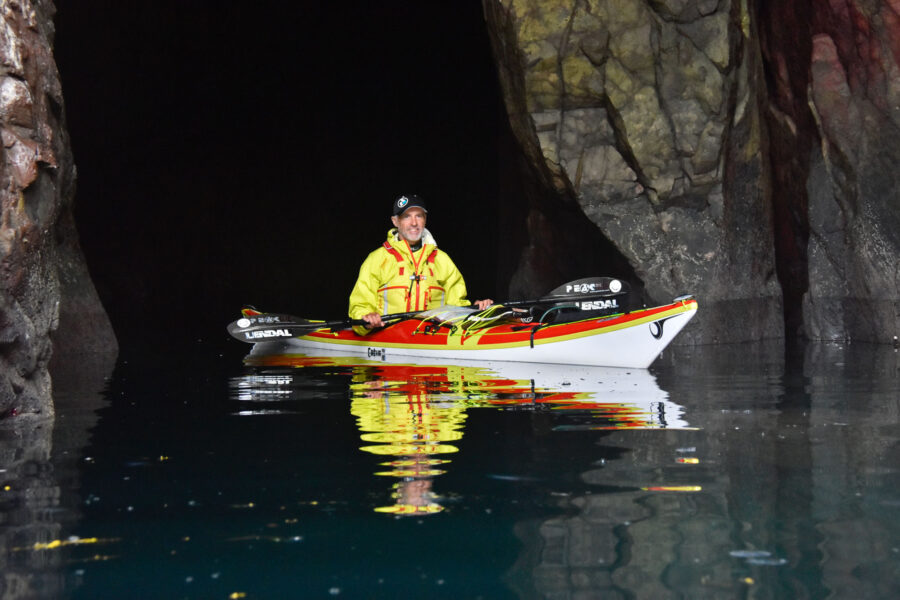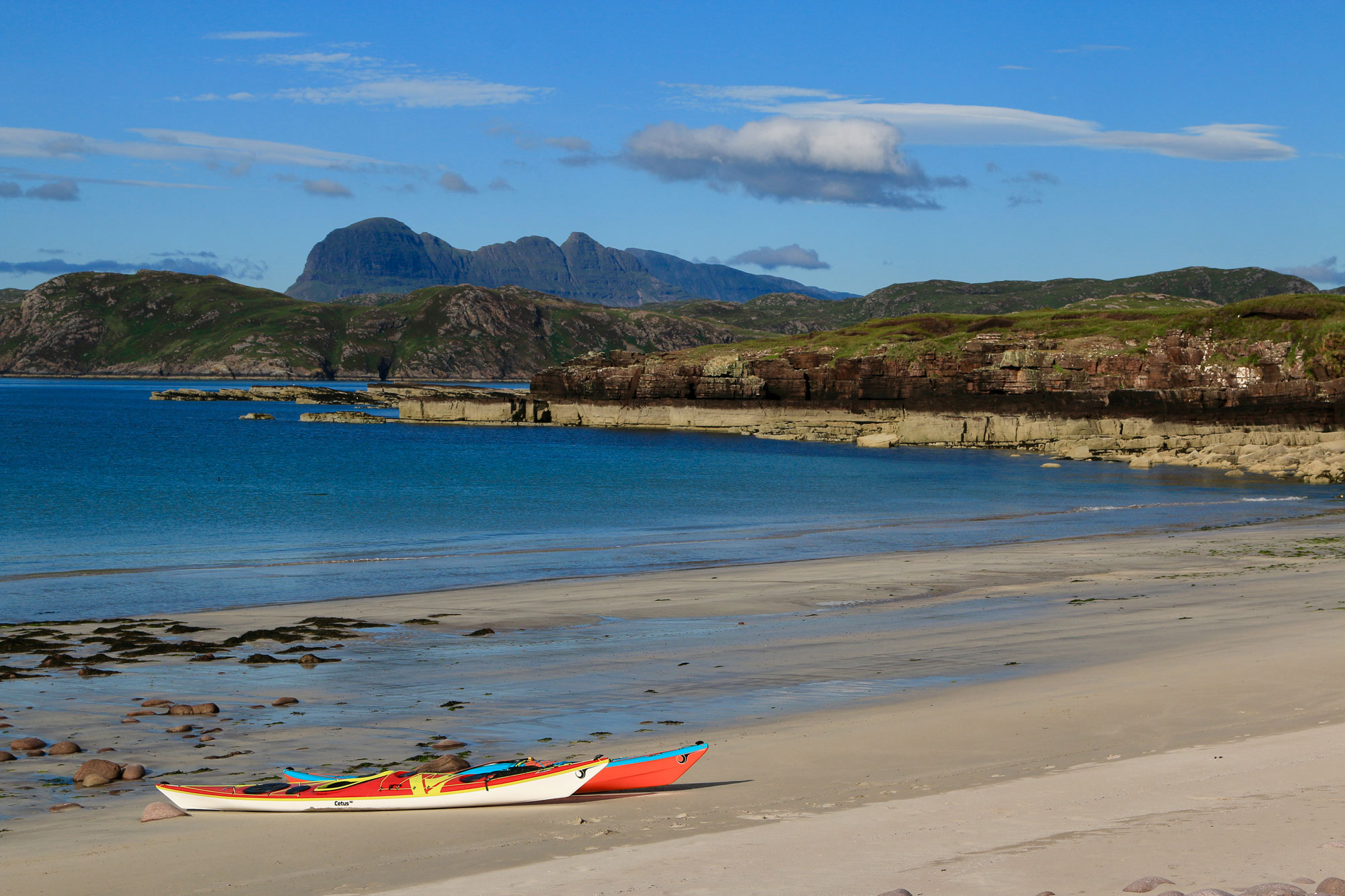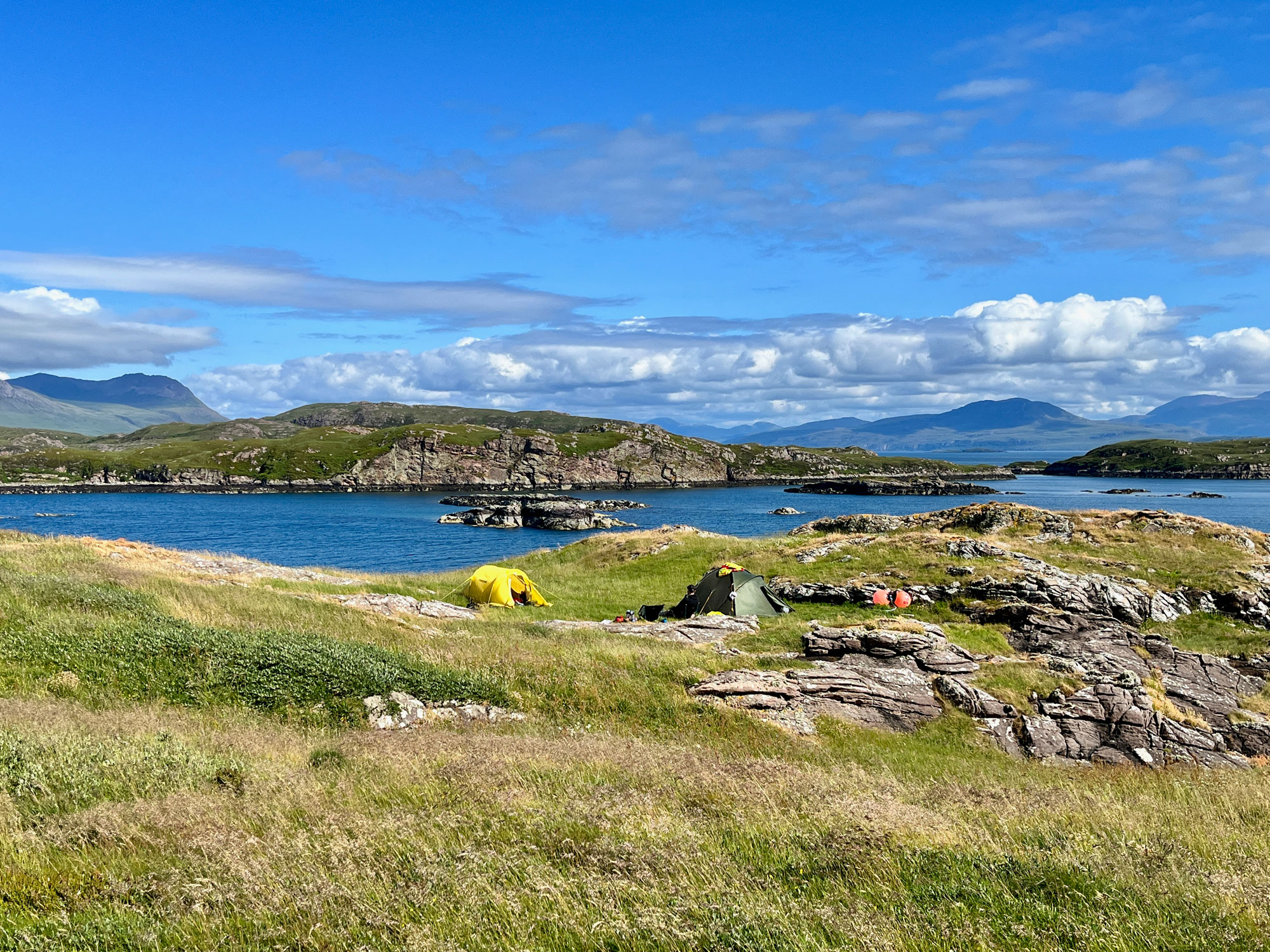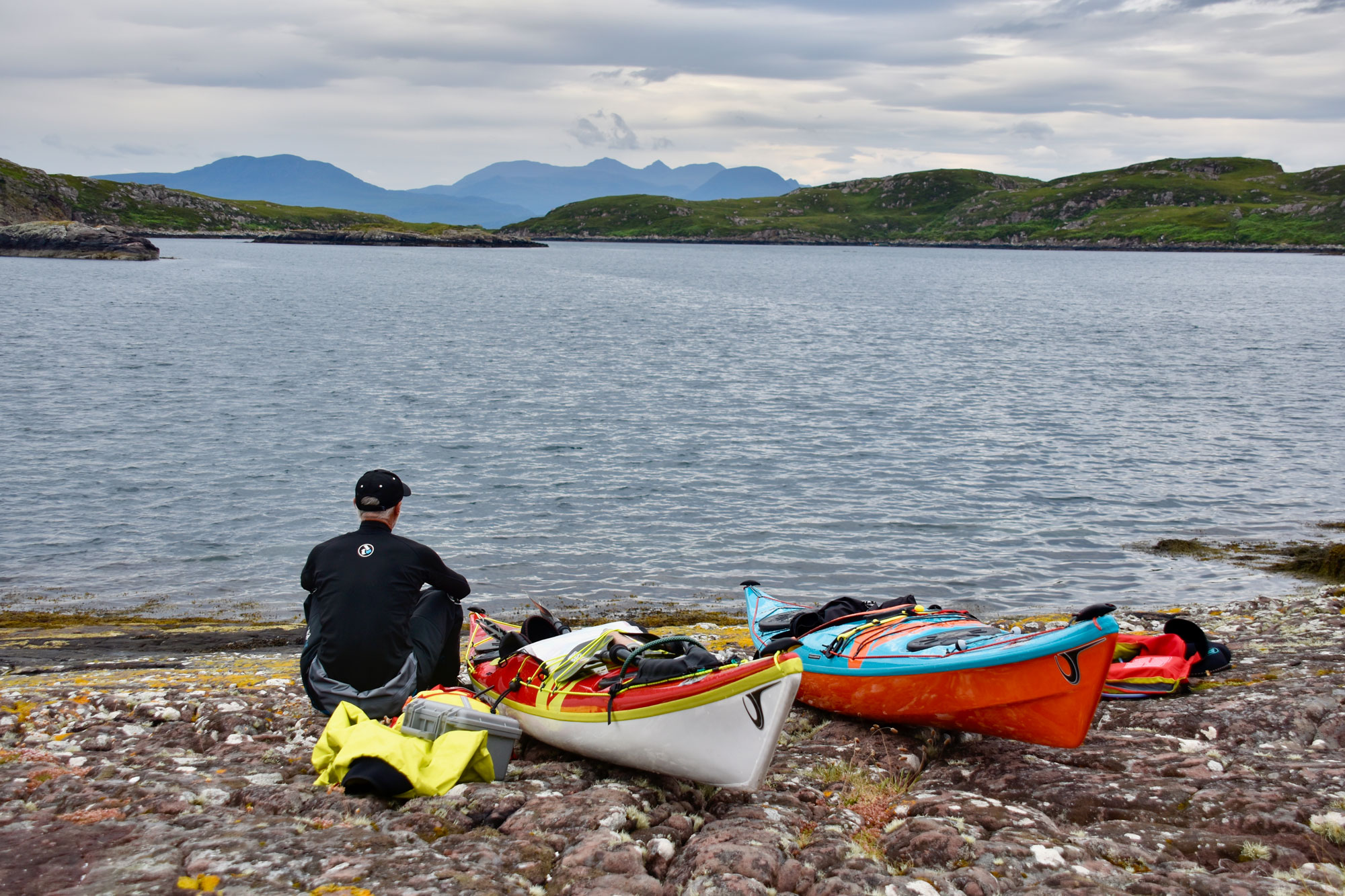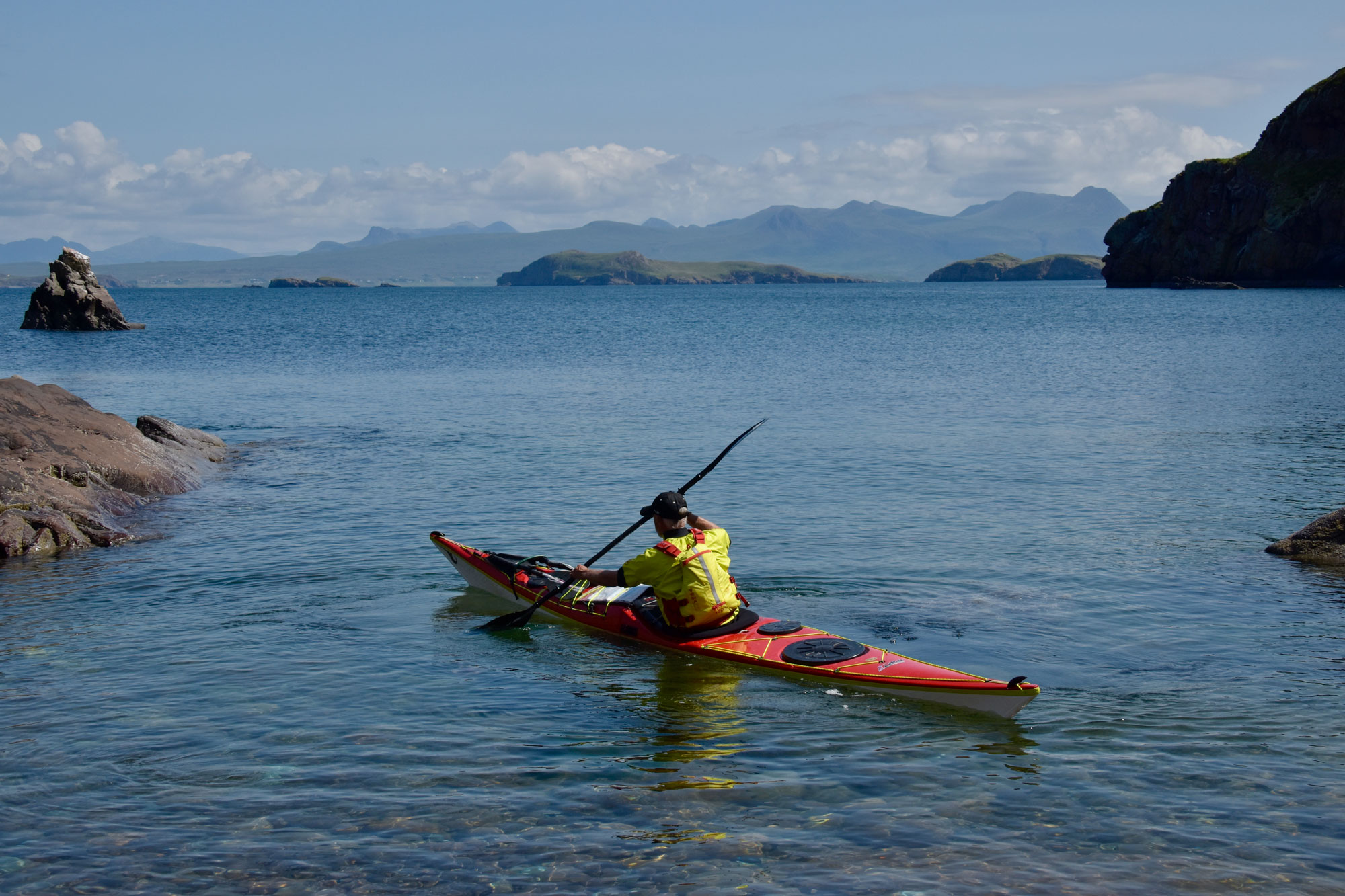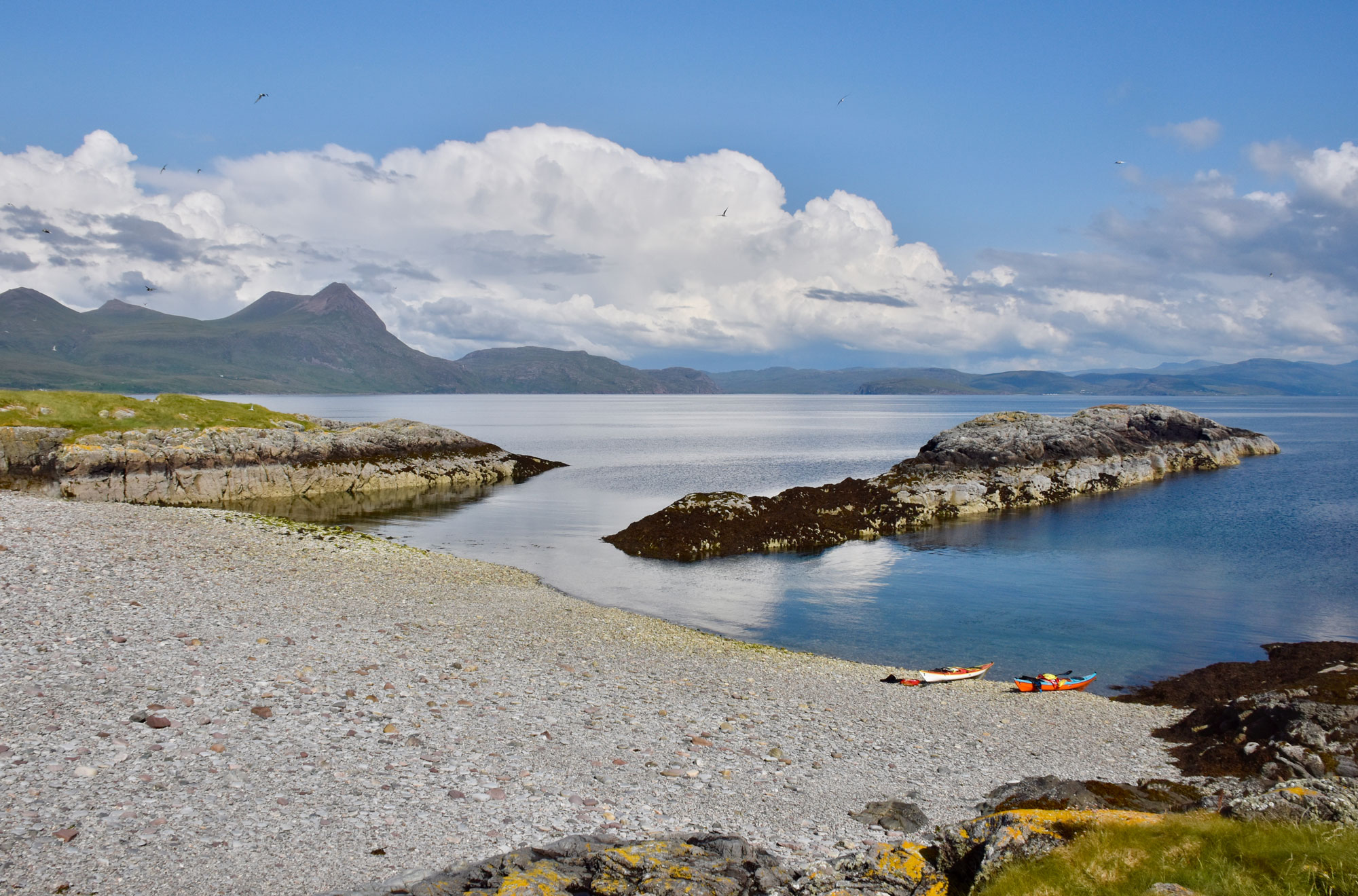Words by Doug Cooper
Photos by Doug Cooper & Pete Astles
Every year, my good friend Pete Astles from Peak PS and I block out two weeks in our diary for a Scottish sea kayaking adventure – the primary aim is to get away from it all and have fun. Last year was no exception, and on a warm and sunny June day, we found ourselves in the Northwest Highlands just north of Ullapool on a stony beach, getting ready to set off for 8 days ‘away from it all’. It was that usual start of a trip; two big piles of kit sat alongside two empty sea kayaks, the two of us wondering if it would all fit! Kit for a self-support trip of this length is nothing we are not used to, but our trip was going to take us initially through the Summer Isles where water was scarce, so we needed to fit in extra water; alongside some of the extra comforts two slightly more ageing adventurers now look to take on trips!
I was packing my trusty Cetus MV that I have paddled for many years now, but Pete was in a new Volan 160 that he was looking forward to trying out, and I was very interested to see how it’d compare with my Cetus! I must admit I was sceptical the Volan 160 would fit all of Pete’s kit in, but it passed this first test with flying colours – everything was in, and its carrying capacity seemed not too restrictive compared to the Cetus.
With perfect weather and a myriad of islands to explore, wild campsites to savour and breathtaking scenery to take in, we spent the next five days exploring every nook and cranny of the beautiful Summer Isles. Evenings were spent enjoying watching the sun set over the distant Outer Hebrides, whilst days were spent venturing between the islands, landing on the beaches, and exploring the caves; all under the watchful eye of the resident wildlife and the towering sentinels that are the surrounding Assynt Mountains.
Whilst exploring the islands, we decided to swap kayaks each day, both wanting to discover the performance differences between our two boats. In the calm conditions, both kayaks cut through the water like a dream, with the Volan 160 consistently surprisingly fast – how could this shorter and wider boat maintain its speed so well was our constant source of discussion; the anticipated ‘faster’ Cetus was not leaving the Volan behind that was for sure. Enjoying exploring the caves, arches, and rocks, the manoeuvrability of a kayak makes such a difference to the ease of what can be achieved; we both had to agree the Volan 160 top trumped the Cetus MV big time when it came to this!
Leaving the Summer Isles behind, our journey continued around the dramatic headland of Rubha Coigeach, with expansive views west to the Hebrides, north to Cape Wrath, and east into the mighty Assynt mountains, a sight to behold. A stunning beach provided our camp for the night, a perfect end to this magical day; however, with the sun setting, the forecast advised us all was to change for the next few days. Waking to a sea of white horses, we planned a conservative route to take us ever north, where we planned to finish at Lochinver. Setting off, we enjoyed a ‘playful’ force 5-6 to get us going, but by the early afternoon, this had evolved into a ‘robust’ force 7-8, and thus, a downwind surf to shelter was required.
The ‘playful’ and then ‘robust’ conditions again provided a great opportunity to test how the two kayaks performed. It was obvious that the Cetus MV tracked a bit better in the side winds, but that said, with appropriate trim and skeg, the Volan 160 was certainly easy enough to keep on track. When the robust conditions asked for stability, manoeuvrability, and confidence-inspiring from the kayaks, then neither let us down. That said, in the Volan 160, it was obvious less effort was required to turn in the conditions, and there was definite extra stability to allow for a slightly more ‘relaxed’ as opposed to ‘focussed’ look on our faces! As for the Force 8 downwind surf – well, that certainly put a big smile on both our faces in our respective craft. However, when it came to cutting about on the following sea waves, the Volan 160 won the price for minimum effort and maximum style, but when it came to getting to the shore first in a straight line at speed, the Cetus MV was there to welcome the Volan ashore!
June in the far Northwest Highlands provides close to twenty-four hours of daylight, so, having sheltered from the wind all afternoon, we could make use of a late evening calm period to continue our journey. Our last camp was on the outskirts of Lochinver, where the following morning we could catch a bus to return us to our car. After our brief stormy period, it provided a tranquillity that could be savoured more than usual as we sat and watched the sunset one last time. It allowed us to reflect on our 8 days ‘away from it all’, chat about sights seen and experiences lived, and, of course, most importantly of all, plan where we will head for the following year’s two-week adventure – already in the diary. The final question to ponder, will I be joining Pete in paddling a Volan 160 for the trip – I think I might be!

